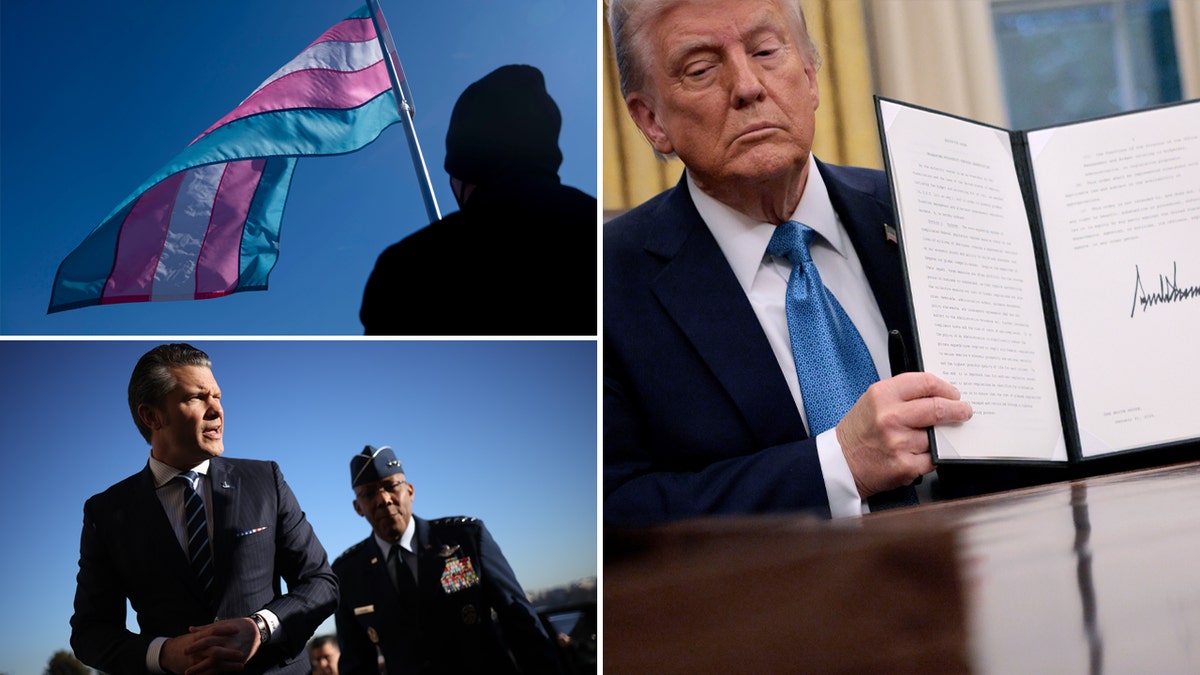Dissecting Trump's Transgender Military Ban: Fact Vs. Fiction

Table of Contents
The Initial Announcement and Rationale
On July 26, 2017, President Trump announced via Twitter a ban on transgender individuals serving in the U.S. military, stating that the military "cannot be burdened with the tremendous medical costs and disruption that transgender in the military would entail." This announcement followed months of internal debate and conflicting statements from various officials within the administration.
The stated justifications for the ban primarily centered on concerns about:
- Cost of healthcare: The administration argued that providing gender-affirming care to transgender service members would place an undue burden on military healthcare resources. This claim was widely disputed by healthcare professionals and experts who pointed out the relatively low cost compared to other military healthcare expenditures.
- Combat readiness: The ban was also justified based on concerns about the impact of transgender service members on unit cohesion and combat readiness. This argument lacked empirical evidence and was criticized for relying on stereotypes and prejudice.
- Disruption and Transition: Concerns regarding the perceived disruption caused by the transition process and the potential need for specialized accommodations for transgender service members were also raised.
Specific quotes from Trump's statements regarding the ban included his assertion that the military "should focus on decisive and overwhelming victory," and that allowing transgender individuals to serve would create "tremendous medical costs and disruption." These assertions were largely based on unsubstantiated claims and ignored the contributions of transgender individuals already serving honorably.
The Legal Challenges and Court Battles
The ban immediately faced significant legal challenges. Numerous lawsuits were filed by various organizations, including LGBTQ+ rights groups like the ACLU and Lambda Legal, and individual transgender service members. These lawsuits argued that the ban violated the principles of equal protection under the law and constituted discrimination based on sex and gender identity.
Key legal arguments centered on:
- Violation of the Equal Protection Clause of the Fourteenth Amendment: Plaintiffs argued that the ban discriminated against transgender individuals without a legitimate government interest.
- Discrimination based on sex: Legal challenges argued that the ban effectively discriminated against transgender women, who were disproportionately affected by the policy.
- Violation of other constitutional rights: Arguments were made that the ban violated other constitutional rights, including the right to due process.
Key court cases included Doe v. Trump, which resulted in injunctions preventing the enforcement of the ban, and subsequent appeals that ultimately led to the Supreme Court's refusal to hear the case.
The Impact on Transgender Service Members
The transgender military ban had a devastating impact on transgender service members. Many faced forced discharge, loss of healthcare benefits, and significant mental health challenges. The uncertainty and fear surrounding the ban created an environment of instability and discrimination.
- Discharge and Loss of Benefits: The ban resulted in the discharge of numerous transgender service members, leaving them without jobs, healthcare, and often facing significant financial hardship.
- Mental Health Crisis: Studies indicated a sharp increase in rates of depression, anxiety, and suicidal ideation among transgender service members during the period of the ban.
- Recruitment and Retention: The ban discouraged transgender individuals from even considering a career in the military, impacting the recruitment and retention of highly qualified individuals. This created a loss of skilled personnel for the armed forces.
Personal stories of transgender service members who were forced out of the military, or who lived in constant fear of discharge, highlight the human cost of this discriminatory policy. (Note: Inclusion of specific personal stories would require careful ethical considerations and obtaining proper consent.)
The Reversal of the Ban and Current Status
The Biden administration swiftly reversed the Trump-era transgender military ban on January 25, 2021, issuing an executive order that prohibited discrimination based on gender identity and sexual orientation in the military. This reversal signaled a commitment to fostering a more inclusive and equitable environment within the armed forces.
- Executive Order 14015: This executive order explicitly stated that military service members should not be discriminated against based on their gender identity or sexual orientation.
- Updated Inclusion Policies: The Department of Defense has implemented updated policies that ensure access to gender-affirming care and prohibit discrimination against transgender service members.
- Ongoing Challenges: Despite the reversal of the ban, some challenges remain, including ensuring that all transgender service members have equal access to healthcare and opportunities, and combating lingering prejudice and discrimination within the military.
The Broader Context of LGBTQ+ Rights in the Military
The transgender military ban must be understood within the broader historical context of LGBTQ+ rights in the military. The ban followed the repeal of "Don't Ask, Don't Tell," a policy that prohibited openly gay and lesbian individuals from serving. The fight for full inclusion of LGBTQ+ individuals in the military is an ongoing struggle, with the transgender military ban representing a significant setback that was ultimately overcome through persistent activism and legal challenges.
Conclusion
The Trump administration's transgender military ban was a controversial and discriminatory policy based on inaccurate claims about costs and combat readiness. The ban caused significant harm to transgender service members, leading to discharges, loss of benefits, and mental health crises. The numerous legal challenges, culminating in the Biden administration's reversal of the ban, underscore the importance of ensuring equal rights and opportunities for all qualified individuals, regardless of gender identity or sexual orientation. Understanding the complexities of the transgender military ban is crucial for informed discussions about equality, inclusion, and military policy. Continue to engage in informed discussions about the transgender military ban and advocate for policies that ensure the full inclusion and equality of all qualified individuals in the armed forces. Further research into the transgender military ban and its lasting consequences is vital to fostering a more inclusive and equitable future for all.

Featured Posts
-
 Edmonton Oilers Favoured Betting Odds For Kings Series End
May 10, 2025
Edmonton Oilers Favoured Betting Odds For Kings Series End
May 10, 2025 -
 New Uk Policy Limiting Student Visas From High Asylum Countries
May 10, 2025
New Uk Policy Limiting Student Visas From High Asylum Countries
May 10, 2025 -
 Strictly Scandal Costs Wynne Evans Go Compare Role
May 10, 2025
Strictly Scandal Costs Wynne Evans Go Compare Role
May 10, 2025 -
 North Dakota Health Officials Quarantine Unvaccinated Students Due To Measles
May 10, 2025
North Dakota Health Officials Quarantine Unvaccinated Students Due To Measles
May 10, 2025 -
 Nyt Strands Game 349 Hints And Solutions For February 15th
May 10, 2025
Nyt Strands Game 349 Hints And Solutions For February 15th
May 10, 2025
